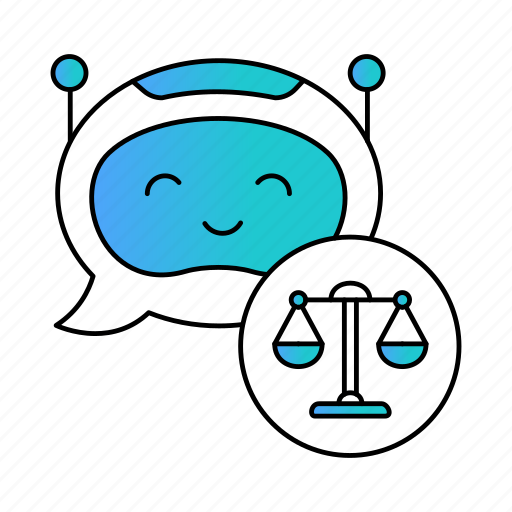Debunking The Myth Of AI Learning: The Key To Responsible AI Usage

Table of Contents
AI Doesn't "Learn" Like Humans: Understanding the Difference
The core difference between machine learning and human learning lies in the process. Humans learn through a combination of observation, reasoning, experimentation, and contextual understanding. We can draw inferences, adapt to new situations, and even learn from mistakes in a nuanced way. AI, on the other hand, primarily relies on pattern recognition and statistical analysis. It "learns" by identifying patterns in vast datasets and using these patterns to make predictions or classifications. Think of it like this: a human learns to ride a bike by understanding balance, coordination, and the physics involved. An AI "learns" to predict bike accidents by analyzing patterns in accident reports—it doesn't actually understand biking.
The Role of Data in AI "Learning"
AI's learning is entirely dependent on the data it's trained on. This reliance creates a critical vulnerability: biased data leads to biased AI. A dataset reflecting societal biases, for example, will produce an AI system that perpetuates those biases.
- Biased data: Consider a facial recognition system trained primarily on images of light-skinned individuals. This system will likely perform poorly on darker-skinned individuals, leading to misidentification and potentially harmful consequences.
- Unfair outcomes: Similarly, an AI used for loan applications trained on historical data might discriminate against certain demographic groups if those groups were historically denied loans, regardless of their current creditworthiness.
- Real-world examples: Numerous examples exist of AI systems exhibiting bias due to flawed training data, highlighting the critical need for careful data curation and preprocessing.
The Absence of Understanding and Context in AI
AI systems lack genuine understanding of the data they process. They can identify patterns and make predictions, but they don't comprehend the meaning behind those patterns. This lack of contextual awareness can lead to errors and unexpected outcomes.
- Lack of contextual awareness: An AI translating text might produce grammatically correct but nonsensical output if it fails to understand the nuances of language and context.
- AI failures: Numerous examples demonstrate AI's susceptibility to failure in situations requiring common sense or contextual understanding, emphasizing the crucial need for human oversight.
- Human oversight: Careful human review and interpretation of AI outputs are essential to ensure accuracy, fairness, and responsible AI usage.
The Importance of Data Quality and Preprocessing in Responsible AI
Building ethical and effective AI systems hinges on the quality and representativeness of the training data. Garbage in, garbage out, as the saying goes. High-quality data should be diverse, inclusive, and free from biases.
Techniques for Mitigating Bias in AI Datasets
Several techniques can help mitigate bias in AI datasets:
- Data augmentation: Increasing the diversity of the dataset by artificially generating new data points.
- Resampling: Adjusting the class distribution in the dataset to better represent the real-world distribution.
- Diverse and inclusive datasets: Actively seeking and incorporating data from underrepresented groups to ensure fairness and accuracy.
- Bias detection tools: Employing tools and techniques designed specifically to identify potential biases within datasets.
The Need for Data Validation and Monitoring
Ongoing monitoring of AI systems' performance is crucial to detect and correct biases that may emerge over time.
- Continuous monitoring: Regularly assessing the AI system's outputs to identify potential disparities or biases.
- Human-in-the-loop systems: Integrating human oversight into the AI system's decision-making process.
- Regular audits and evaluations: Conducting periodic evaluations of the AI system's performance and data integrity to ensure accountability and responsible AI usage.
Ethical Considerations and the Future of Responsible AI Development
Deploying AI systems without acknowledging their limitations carries significant ethical implications. Transparency and accountability are paramount.
Transparency and Explainability in AI
Understanding how an AI system arrives at its decisions is critical for building trust and ensuring accountability. Explainable AI (XAI) techniques are crucial for this purpose.
- Transparent decision-making: Designing AI systems that provide clear explanations for their outputs.
- Improving model explainability: Employing techniques such as LIME or SHAP to make AI models more interpretable.
- Benefits of XAI: Increased accountability, improved trust in AI systems, and better understanding of potential biases.
The Role of Human Oversight and Control
Human oversight is essential throughout the entire lifecycle of AI development and deployment.
- Human-in-the-loop systems: Designing systems that allow human intervention when necessary.
- Human intervention in critical situations: Ensuring that humans can override AI decisions when necessary, particularly in high-stakes situations.
- Human-AI collaboration: Focusing on collaborative systems where humans and AI work together to leverage the strengths of both.
Conclusion: Moving Towards Responsible AI Usage
Debunking the myth of AI learning is crucial for responsible AI development. AI does not learn like humans; it identifies patterns in data. Responsible AI usage necessitates careful attention to data quality, bias mitigation, ethical considerations, and human oversight. We must prioritize ethical AI practices, actively work towards mitigating bias in AI, and foster transparency and accountability in all stages of AI development and deployment. Let's move forward, building and using AI responsibly, ensuring a future where this powerful technology benefits all of humanity.

Featured Posts
-
 Vets Reveal Constant Pressure To Prioritize Profit Over Patient Care
May 31, 2025
Vets Reveal Constant Pressure To Prioritize Profit Over Patient Care
May 31, 2025 -
 Tennis News Tsitsipas Addresses Ivanisevic Coaching Rumors
May 31, 2025
Tennis News Tsitsipas Addresses Ivanisevic Coaching Rumors
May 31, 2025 -
 The Truth About Rising Uk Vet Bills Corporate Influence And Solutions
May 31, 2025
The Truth About Rising Uk Vet Bills Corporate Influence And Solutions
May 31, 2025 -
 Northeast Ohio Braces For Severe Thunderstorms Preparing For Potential Power Outages
May 31, 2025
Northeast Ohio Braces For Severe Thunderstorms Preparing For Potential Power Outages
May 31, 2025 -
 Comerica Park Hosts Detroit Tigers And Chicago White Sox For Opening Day 2025
May 31, 2025
Comerica Park Hosts Detroit Tigers And Chicago White Sox For Opening Day 2025
May 31, 2025
